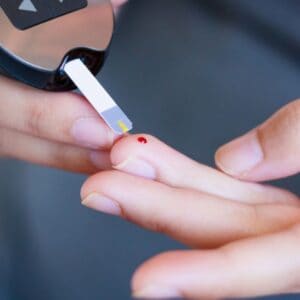
The site is temporarily down due to maintenance. Sorry for the inconvenience.
The site is temporarily down due to maintenance. Sorry for the inconvenience.
The site is temporarily down due to maintenance. Sorry for the inconvenience.
The site is temporarily down due to maintenance. Sorry for the inconvenience.
Quality & Accuracy
Experience
The latest technologies
Speed &
Credibility
₾75.00
Research is used:
• To assess liver function during the damaging influence of chemical or other factors.
• Also, to assess the histological condition of the liver after a course of hepatitis C treatment.
• To evaluate extrahepatic cholestasis during pregnancy
Bile acids are produced in the liver by conjugation of cholesterol with glycine and taurine. It is concentrated in the gall bladder and excreted in the intestine after eating. In the lumen of the intestine, bile acids ensure the emulsification of fats (the breaking down of large molecules into smaller fat molecules) and the digestion process. 90% of the bile acids secreted in the intestinal lumen are reabsorbed.
An increase in the concentration of bile acids is a highly sensitive indicator of liver diseases, such as: liver cirrhosis, hepatitis, cholestasis, portal vein thrombosis, Bad-Chiar syndrome, cholangitis, Wilson's disease, hemochromatosis and others. In intestinal malabsorption syndrome, the increase of bile acids in the blood is not observed. Metabolic disorders of the liver, such as Gilbert's syndrome, Crigler-Najjar hereditary jaundice, Dabbin-Jones syndrome, etc., do not cause disturbances in the concentration of bile acids in the blood.
Venous blood
< or =10 μmol/L
Other tests




Testing process
|
Purchase a test |
Submission of material |
|
Results Online |
Consult a doctor |

More than 1000 routine and complex/specific diagnostic tests in all major areas of clinical pathology.

48 laboratory centers in 25 cities of Georgia: Tbilisi, Rustavi, Kutaisi, Batumi, Marneuli, Telavi, Zugdidi, Zestafon, Gori, Kobuleti, Akhaltsikhe, Khashuri, Sartichala, Kazbegi, Borjomi, Samtredia, Gurjaani, Lagodekhi, Akhmeta, Ozurgeti, Poti, Chiatura , Dusheti, Kareli, New Gudauri.

Use the Synevo web platform to view results from anywhere and anytime
Use the Synevo web platform to view results from anywhere, anytime
From Monday to Saturday you can use the laboratory services at home.
☎️ Hotline: 239 38 33 or 239 40 65
577293008 (9:00-დან 17:00-მდე)
30 laboratory centers in 11 cities of Georgia: Tbilisi, Kutaisi, Batumi, Kobuleti, Zugdidi, Zestaponi, Rustavi, Marneuli, Akhaltsikhe, Telavi, Gori.
More than 3000 routine and complex / specific diagnostic tests in all major areas of clinical pathology.

"Synevo" - Providing a wide range of diagnostic services in Georgia, offering more than 1,000 routine and specific diagnostic tests in all major areas of clinical pathology. By the end of 2023, the Synevo Georgia network will include 3 clinical laboratories and 47 blood sampling units, which will perform more than 300,000 tests.
Contact information
Address: Tsinandali St. N9 (N1 Clinical Hospital area)
2021 – 2023 © Synevo. all rights reserved